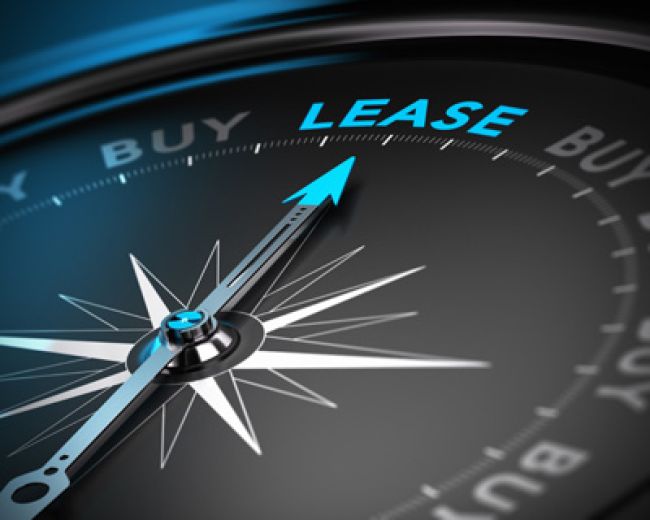
When Does Leasing Make Financial Sense for a Utility Fleet?
Own or lease – which vehicle acquisition strategy makes the most sense for utility fleets?
There’s no clear-cut answer, said Marcin Michno, project manager, strategic consulting for Element Fleet Management (www.elementfleet.com). “It’s impossible to define an ideal, uniform leasing scenario for an entire utility industry because there are too many variables, and every company has a different situation. Are they looking to preserve cash? What’s their tax strategy? Are interest rates favorable? What is the company’s risk tolerance? And not all vehicle applications should be treated the same. You have to look at the individual company’s situation and design a financial strategy around that.”
Bill Doman, department head, sales support at ARI (www.arifleet.com), agrees. “Conventional wisdom is that a regulated [public] utility is going to purchase everything, and an investor-owned utility is more open to leasing. But in reality, we know a few regulated utilities that lease 100 percent of their vehicles. And the vast majority of our utility clients – whether regulated or investor-owned – have a mix of owned and leased vehicles. They’re finding the right applications where they can take advantage of leasing and create a situation where they get the benefits of cash preservation, improved cash flow and potential tax advantages.”
Financial Flexibility
It’s a commonly used term, but what exactly is leasing?
“When you lease, you might be paying only for the usable portion of that vehicle,” said Steve Byrd, manager of truck excellence for Element Fleet Management. “In other words, you’re financing the spread between the capitalized cost of the vehicle and its residual value [the projected worth of the vehicle at the end of the lease term]. So, if the total vehicle cost is $100,000 and the residual is $20,000, you’re leasing $80,000 worth of truck – the amount of the truck you intend to actually use.”
One of the key advantages to leasing is the flexibility to customize the contract in ways that can minimize upfront cash requirements, reduce monthly payments and provide multiple options at lease-end – such as whether to turn in, purchase or sell the vehicle – based on the company’s finance and accounting objectives.
And although there’s no cookie-cutter profile, here are a couple scenarios where utility fleets could benefit from leasing.
High-Use Vehicles
“Generally speaking, it is possible to structure and tailor a lease to be advantageous for fleets with higher mileage and higher utilization,” Byrd said. “Vehicles that are more specialized [such as bucket trucks and digger derricks], with lower miles and longer life cycles, would have different, specific considerations for leasing and ownership. These structures will be different for each of these scenarios.”
What are some examples of high-utilization applications in utility fleets?
“Executive vehicle and meter-reader applications,” Doman said. “In these cases, fleet managers know exactly how many miles those vehicles will travel, and there’s a predictable driving pattern with them. They also tend to replace these vehicles on a shorter life cycle to ensure vehicles look new to maintain a clean public image.”
According to Byrd, “With any application, there should be a discipline to renew your fleet on a regular interval, so you can take advantage of the latest safety technologies, improved fuel efficiencies and lower maintenance costs. Working with your fleet management company will help in promoting that discipline.”
Accelerating Green Fleet Acquisition
Doman points to Edison Electric Institute’s fleet electrification initiative (see www.eei.org) as an intriguing leasing opportunity for utility fleets. As of late last year, more than 70 investor-owned utilities had pledged to devote at least 5 percent of their annual fleet budgets to electrified vehicles.
“Instead of taking the 5 percent budget to purchase two large hybrid-electric bucket trucks outright, utilities can structure leases that spread that budget over, say, 50 plug-in electric vehicles for meter-reader applications,” Doman said. “Beyond just getting substantially more vehicles with the same budget, there’s also the PR advantage to that. You can say, ‘We have 50 vehicles out on the road that operate on clean electric power’ and promote that on the sides of your vehicles to make a statement to customers about your investment in the environment.”
Keep an Open Mind
Whether you lean toward ownership or leasing, keep an open mind, Doman advised. “Don’t look at things the way you’ve always done them. There’s a lot of flexibility involved in all the different types of leases available. And look at certain segments of your fleet and explore where it might make sense to put your toe in the water if [leasing] is something you haven’t done before.”
*****
Dig Deeper
To learn more about vehicle leasing, visit these resources:
• “Lease a Truck – Pros and Cons” from LeaseGuide.com: www.leaseguide.com/articles/truckleasing.htm
• Equipment Leasing and Finance Association: www.elfaonline.org
• Automotive Fleet & Leasing Association: www.afla.org

